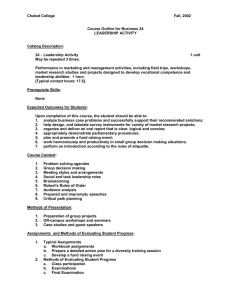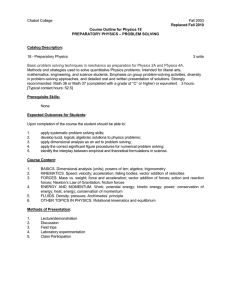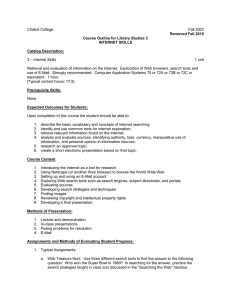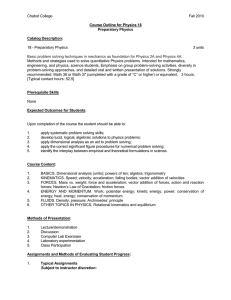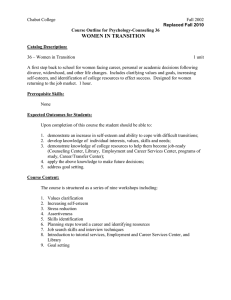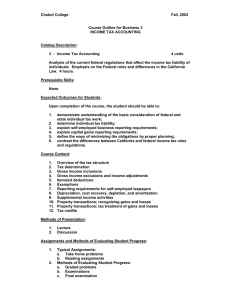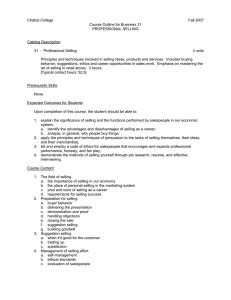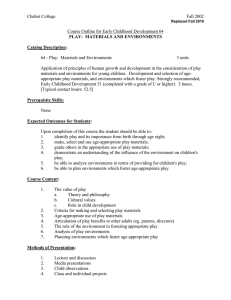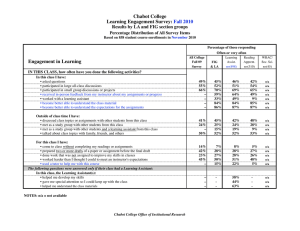Document 11495433
advertisement
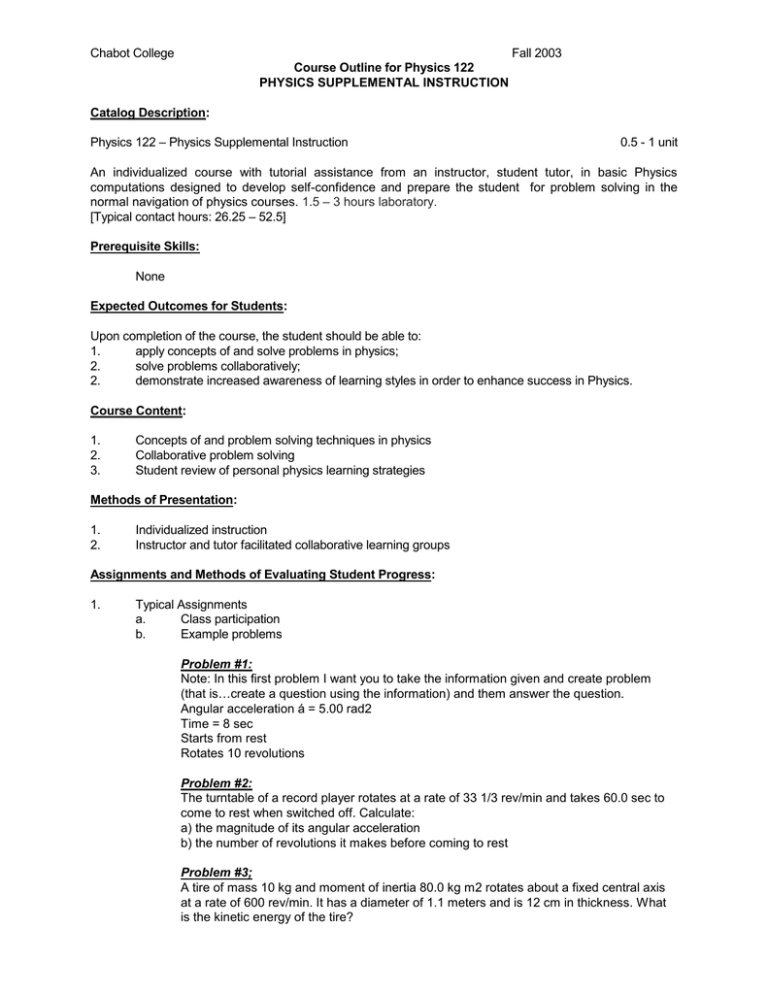
Chabot College Fall 2003 Course Outline for Physics 122 PHYSICS SUPPLEMENTAL INSTRUCTION Catalog Description: Physics 122 – Physics Supplemental Instruction 0.5 - 1 unit An individualized course with tutorial assistance from an instructor, student tutor, in basic Physics computations designed to develop self-confidence and prepare the student for problem solving in the normal navigation of physics courses. 1.5 – 3 hours laboratory. [Typical contact hours: 26.25 – 52.5] Prerequisite Skills: None Expected Outcomes for Students: Upon completion of the course, the student should be able to: 1. apply concepts of and solve problems in physics; 2. solve problems collaboratively; 2. demonstrate increased awareness of learning styles in order to enhance success in Physics. Course Content: 1. 2. 3. Concepts of and problem solving techniques in physics Collaborative problem solving Student review of personal physics learning strategies Methods of Presentation: 1. 2. Individualized instruction Instructor and tutor facilitated collaborative learning groups Assignments and Methods of Evaluating Student Progress: 1. Typical Assignments a. Class participation b. Example problems Problem #1: Note: In this first problem I want you to take the information given and create problem (that is…create a question using the information) and them answer the question. Angular acceleration á = 5.00 rad2 Time = 8 sec Starts from rest Rotates 10 revolutions Problem #2: The turntable of a record player rotates at a rate of 33 1/3 rev/min and takes 60.0 sec to come to rest when switched off. Calculate: a) the magnitude of its angular acceleration b) the number of revolutions it makes before coming to rest Problem #3; A tire of mass 10 kg and moment of inertia 80.0 kg m2 rotates about a fixed central axis at a rate of 600 rev/min. It has a diameter of 1.1 meters and is 12 cm in thickness. What is the kinetic energy of the tire? Chabot College Course Outline for Physics 122, page 2 Fall 2003 Assignments and Methods of Evaluating Student Progress – continued: 2. Methods of Evaluating Student Progress a. Oral interchange and written exposition of material discussed b. Final portfolio Textbook(s) (Typical): 1. 2. 3. Conceptual Physics, Paul G. Hewitt Hardcover, Addison-Wesley Pub Co; 9th edition, 2001 Sears and Zemansky's University Physics, Hugh D. Young, Roger A. Freedman, T. R. Sandin, A. Lewis Ford, Addison-Wesley Pub Co; 10th edition, 1999 Physics, James S. Walker, Washington State University, 2001 Special Student Materials: None Revised: 11/19/02
